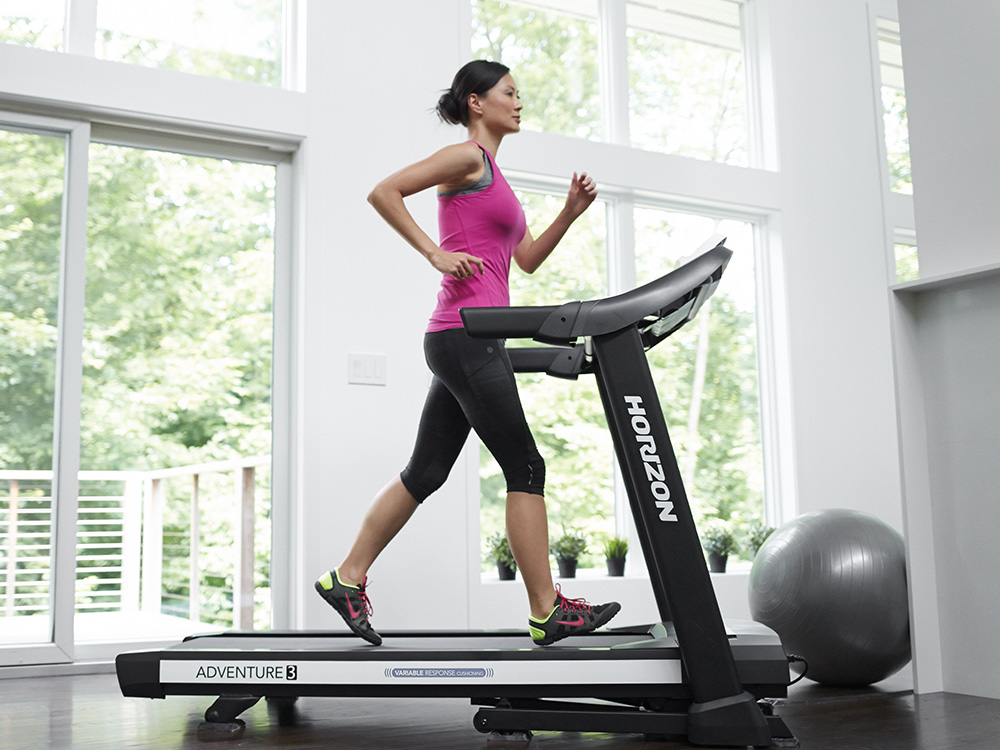
One of the nice things about treadmills is they are an excellent tool for all fitness levels. Whether you’re a first-time exerciser looking to build cardio endurance and lose some fat, or an experienced fitness enthusiast looking to take your performance to a new level, the treadmill is a great choice.
Keep in mind your treadmill isn’t limited to cardio workouts. Sure it’s great for getting in a good long walk or for running a few miles, but today I’m going to show you how to turn your treadmill into a metabolic machine to help you improve your cardiovascular capacity, increase strength and muscle, and burn fat!
What is a Metabolic Workout?
Metabolic Workouts are among the most efficient (and challenging) workouts to help burn the greatest number of calories in the least amount of time. It combine exercises that engage different muscle groups, or use different movement patterns with very little rest between sets.
The term “metabolic conditioning” doesn’t describe a specific workout. It instead refers to a type of workout designed to challenge the two major energy systems that contribute to exercise effectiveness.
Strength training relies most on ATP, an energy system that fulfills our immediate need for fuel.
On the flip side of that, moderate cardio uses glycolysis to fuel our bodies over longer, slower exercise sessions.
Metabolic conditioning targets both energy systems in the same workout by using high intensity, whole body movements along with a very short work-to-rest ratio.
That means you go from one challenging exercise to the other with minimal rest in between. You do this for certain intervals, anywhere from 20 seconds to more than 2 minutes.
Metabolic workouts are also a proven way to boost your metabolism and get the “after burn” effect; the body’s ability to burn calories at a higher rate in the hours AFTER your workout.
What You’ll Need
While you can utilize regular sprinting outdoors or on a track, your treadmill is an excellent tool for metabolic workouts because you can do everything in the convenience of your home. To go along with your treadmill sprints, you’ll be performing strength exercises with your own bodyweight, resistance (bands, free weights, etc.) or both.
Be sure you are properly warmed-up before any of the following workouts
Metabolic Workout #1
30 second treadmill sprint (8-10 mph at 5% incline)
30 seconds of rest
30 seconds of push-ups
30 seconds of rest
30 second plank
30 seconds of rest
Repeat for 4-6 total rounds
Metabolic Workout #2
30 second treadmill sprint
15 seconds of rest
30 seconds of push-ups
15 seconds of rest
30 seconds of band rows
15 seconds of rest
Repeat for 4-6 total rounds
Metabolic Workout #3
30 seconds of your favorite upper body exercise
15 seconds of rest
30 seconds of your favorite lower body exercise
15 seconds of rest
30 seconds of your favorite core exercise
15 seconds of rest
30 second treadmill sprint
Repeat for 4-6 rounds
Before diving head-first into any type of a workout program, participants should know the risks that might be involved. In the case of higher intensity metabolic workouts, here are a few of the more common things to be aware of….
Joint strains/muscle pulls:
Always be sure to start a workout session with a thorough warm-up to better prepare the body for the demands of the activity. Also, be sure to save some time for a proper cool down. This could simply be an expended “active recovery” like walking or biking at an easy pace or some flexibility/mobility work. Regardless of what you choose, be sure your heart rate has had proper time to come back down and you are breathing normal.
Development of over-use injuries:
Always keep in mind that variety is important to a well-rounded exercise routine. Doing the same things over and over will eventually lead to an over-use injury. Metabolic training is not an every-day activity….be sure to allow for proper rest and recovery between workouts. Ideally, metabolic workouts should be done no more than 2-3 days/week in conjunction with other activities such as weight training, flexibility/mobility, and steady state cardio.
Increased risk of over-training:
Because of its demands, these workouts can sometimes lead to over-training in those who do not allow for proper rest/recovery time. Symptoms to look out for with over-training include messed-up sleep patterns, fatigue, chronic ache, increased number of colds, and nagging injuries. By scheduling regular rest/recovery days and alternating higher intensity workout days with lighter workout days, you’ll avoid the potential risk of over-training.
With the many benefits associated with metabolic workouts, I highly suggest everyone try to incorporate them into their regular routine. Be smart (warm-up, cool-down), choose activities you enjoy, and have fun with the challenge that intervals provide!

